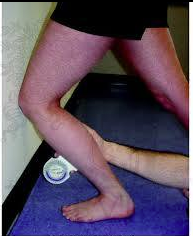Ankle Plantarflexors as Gait compensators ?
/We are always talking about compensations. We have worn out our statement “what you see in someone’s gait is not their problem, ti is their compensation stratetgy(s).”
Here is a study with an interesting thought.
Just remember, try to fix the underlying problems. But, realizing sometimes you cannot, especially in the elderly population, sometimes you have to give a strategy to help them even though it is not the solution you want. And remember also that driving the anterior compartment with appropriate exercises as our “shuffle walk” might stop any loss of ankle dorsiflexion that might be met with the extra calf work that this article seems to suggest.
From the study: “ Of particular importance were the compensatory mechanisms provided by the plantar flexors, which were shown to be able to compensate for many musculoskeletal deficits, including diminished muscle strength in the hip and knee flexors and extensors and increased hip joint stiffness. This importance was further highlighted when a normal walking pattern could not be achieved through compensatory action of other muscle groups when the uniarticular and biarticular plantar flexor strength was decreased as a group. Thus, rehabilitation or preventative exercise programs may consider focusing on increasing or maintaining plantar flexor strength, which appears critical to maintaining normal walking mechanics.”
Gait Posture. 2007 Mar;25(3):360-7. Epub 2006 May 23.
Compensatory strategies during normal walking in response to muscle weakness and increased hip joint stiffness.
Goldberg EJ1, Neptune RR.
http://www.ncbi.nlm.nih.gov/pubmed/16720095



















